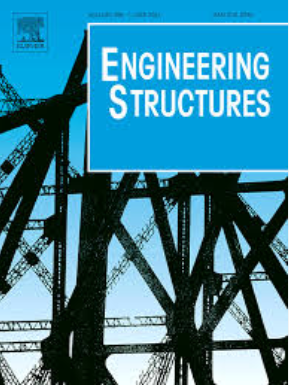Leveraging data-driven artificial intelligence in optimization design for building structures: A review
IF 6.4
1区 工程技术
Q1 ENGINEERING, CIVIL
引用次数: 0
Abstract
Applying optimization methods to design, referred to as optimization design, is a widely adopted approach in structural design of buildings. Conventional optimization methods primarily focus on enhancing the performance or reducing the cost of buildings, while ensuring that they satisfy certain structural design requirements. However, these methods often suffer from low optimization efficiencies and struggle to satisfy implicit design constraints. Recent rapid advances in data-driven artificial intelligence (AI) approaches enable the extraction of implicit design knowledge from extensive datasets and efficient handling of complex optimization tasks, thereby introducing new possibilities for optimization design. The integration of data-driven AI methods into structural optimization has led to the growth of research on intelligent optimization design for building structures, demonstrating significant potential for generating initial designs, simplifying optimization problems, solving the related models, and evaluating the results. This study systematically reviews data-driven intelligent optimization design for building structures, with the aim of classifying various optimization techniques, and summarizing the distinct roles of data-driven AI methods in intelligent optimization design. The findings indicate a significant upward trend in the application of intelligent optimization methods, while the emergence of novel AI techniques presents both opportunities and challenges. This study also aims to provide a comprehensive reference for methods and application scenarios of intelligent optimization design for building structures; this helps designers leverage the learning capabilities of data-driven AI approaches alongside the quantitative-analysis strengths of optimization methods to enhance the quality and efficiency of building structures.
在建筑结构优化设计中利用数据驱动的人工智能:综述
将优化方法应用于设计,简称优化设计,是建筑结构设计中广泛采用的一种方法。传统的优化方法主要侧重于提高建筑物的性能或降低建筑物的成本,同时确保建筑物满足一定的结构设计要求。然而,这些方法往往存在优化效率低、难以满足隐式设计约束的问题。最近数据驱动的人工智能(AI)方法的快速发展使得从广泛的数据集中提取隐式设计知识和有效处理复杂的优化任务成为可能,从而为优化设计引入了新的可能性。将数据驱动的人工智能方法集成到结构优化中,促进了建筑结构智能优化设计研究的增长,在生成初始设计、简化优化问题、求解相关模型和评估结果方面显示出巨大的潜力。本研究系统综述了数据驱动的建筑结构智能优化设计,旨在对各种优化技术进行分类,并总结数据驱动的人工智能方法在智能优化设计中的独特作用。研究结果表明,智能优化方法的应用呈显著上升趋势,而新型人工智能技术的出现既带来了机遇,也带来了挑战。本研究旨在为建筑结构智能优化设计的方法和应用场景提供综合参考;这有助于设计师利用数据驱动的人工智能方法的学习能力,以及优化方法的定量分析优势,以提高建筑结构的质量和效率。
本文章由计算机程序翻译,如有差异,请以英文原文为准。
求助全文
约1分钟内获得全文
求助全文
来源期刊

Engineering Structures
工程技术-工程:土木
CiteScore
10.20
自引率
14.50%
发文量
1385
审稿时长
67 days
期刊介绍:
Engineering Structures provides a forum for a broad blend of scientific and technical papers to reflect the evolving needs of the structural engineering and structural mechanics communities. Particularly welcome are contributions dealing with applications of structural engineering and mechanics principles in all areas of technology. The journal aspires to a broad and integrated coverage of the effects of dynamic loadings and of the modelling techniques whereby the structural response to these loadings may be computed.
The scope of Engineering Structures encompasses, but is not restricted to, the following areas: infrastructure engineering; earthquake engineering; structure-fluid-soil interaction; wind engineering; fire engineering; blast engineering; structural reliability/stability; life assessment/integrity; structural health monitoring; multi-hazard engineering; structural dynamics; optimization; expert systems; experimental modelling; performance-based design; multiscale analysis; value engineering.
Topics of interest include: tall buildings; innovative structures; environmentally responsive structures; bridges; stadiums; commercial and public buildings; transmission towers; television and telecommunication masts; foldable structures; cooling towers; plates and shells; suspension structures; protective structures; smart structures; nuclear reactors; dams; pressure vessels; pipelines; tunnels.
Engineering Structures also publishes review articles, short communications and discussions, book reviews, and a diary on international events related to any aspect of structural engineering.
 求助内容:
求助内容: 应助结果提醒方式:
应助结果提醒方式:


